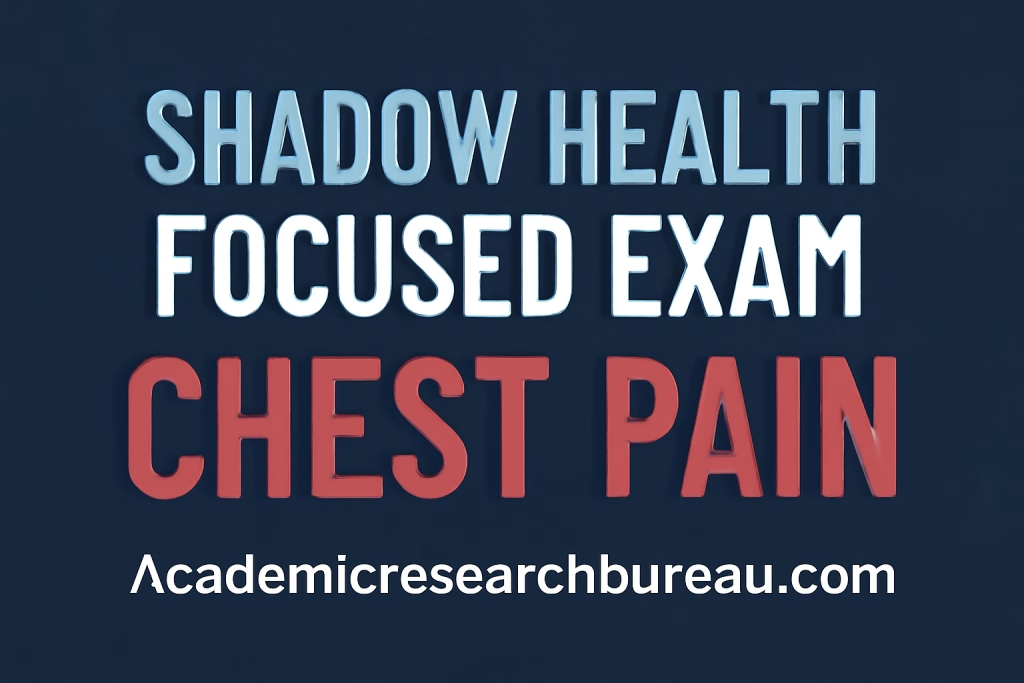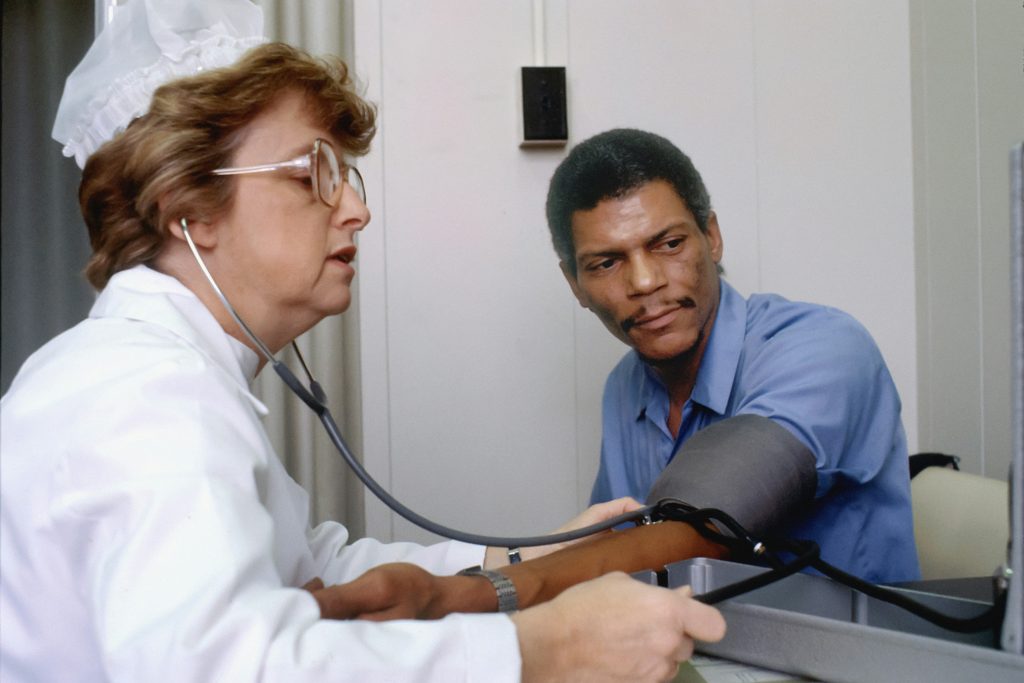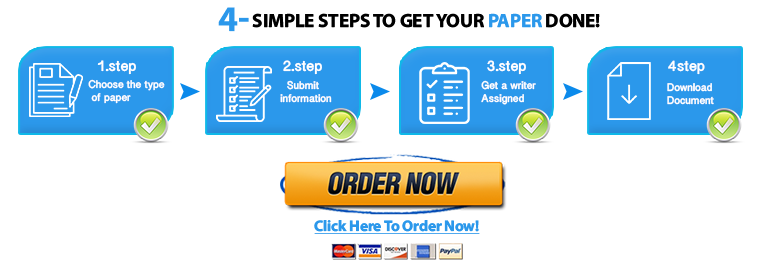Table of Contents
ToggleIntroduction

Shadow Health simulations are among the most widely used virtual clinical learning tools in nursing education. Among its many modules, the Brian Foster chest pain focused exam is one of the more challenging and high-stakes encounters for students. If you mess up history taking, miss key objective findings, or fumble documentation or empathy, you risk losing points.
In this comprehensive guide, you will get:
-
A detailed, step-by-step walkthrough of the subjective, objective, and documentation portions of Brian Foster’s chest pain assessment
-
Tips to maximize your score in Shadow Health (subjective, objective, empathy, documentation)
-
A differential diagnosis table, documentation templates, and sample dialogue
-
Common pitfalls, study tactics, and FAQ
By the end of this article, you’ll have a battle plan to enter the simulation confidently and perform the chest pain exam optimally.
Overview: Who Is Brian Foster & Why This Case Matters
Brian Foster is a 58-year-old Caucasian male, hospitalized post-TURP (transurethral resection of the prostate) for three days, who now presents with chest pain during his hospital stay.
His scenario is crafted to test your skills in focused history taking, physical exam, differentiation of cardiac vs noncardiac etiologies, empathy/education, and documentation.
According to procedural breakdowns seen in student reports, many lose points in objective data (e.g. auscultation, inspection) and documentation.
This case is particularly useful in developing clinical reasoning: Is this chest pain angina, myocardial ischemia, GERD, costochondritis, or another cause? The simulation expects you to sift through clues and ask the right follow-up questions.
Clinical & Guideline Context: Why Chest Pain Must Be Taken Seriously
Before diving into the steps, it’s worth framing the broader clinical significance of chest pain:
-
Chest pain is one of the most common reasons for emergency department visits in the U.S.
-
However, only a minority of chest pain cases turn out to be acute coronary syndromes (ACS). For example, among ED patients in whom ACS is suspected, <5% will have STEMI, 5–10% NSTEMI, 5–10% unstable angina, while 50–60% have noncardiac causes (e.g. GI, musculoskeletal)
-
The 2025 ACC/AHA/ACEP guideline emphasizes risk stratification, early biomarker testing (e.g. high sensitivity troponin), ECG, and avoiding unnecessary testing in low-risk individuals.
-
The 2021 AHA/ACC chest pain guideline underscores that one size doesn’t fit all — testing should be tailored to pretest probability, and “noncardiac” is preferred over “atypical” in terminology.
In the context of Brian Foster, your job is not to “prove” a diagnosis but to gather enough data to identify risk, rule out red flags, and formulate a plausible differential. That’s exactly what Shadow Health expects.
Step-by-Step Assessment Guide
This section walks you through what to ask, what to examine, and how to document — along with tips on how to maximize scoring.
1. Subjective / History of Present Illness (HPI)
Begin with a structured history using PQRST or OLDCARTS. Follow with risk factors, associated symptoms, and background medical history.
Key domains and sample phrases:
| Domain | Key Questions / Prompts | Purpose & Tips |
|---|---|---|
| Onset & Duration | “When did the pain begin?” “How long does it last?” | For Brian, pain began with exertion (yard work, stairs) and lasts a few minutes. |
| Provoking / Palliating | “What makes it better or worse?” | He reports pain triggered by exertion or heavy meals; relieved by rest. |
| Quality & Severity | “How would you describe it?” “On a scale of 1–10, how bad is it?” | He describes “tightness,” “uncomfortable,” approx 5/10. |
| Location & Radiation | “Where exactly is it?” “Does it go anywhere else (arm, jaw, back)?” | Midsternal, over the heart, no clear radiation in some student docs. |
| Timing / Pattern | “Does it come and go?” “When is it worst?” | Episodes intermittently over the past month. |
| Associated Symptoms | SOB, nausea, diaphoresis, heartburn, fatigue | Ask systematically: shortness of breath, palpitations, GI symptoms. |
| Risk Factors & PMH | HTN, hyperlipidemia, obesity, family history of CAD | He has hypertension, high cholesterol, weight gain, sedentary lifestyle. |
| Medications / Compliance | “What meds do you take?” “Do you take them as prescribed?” | Essential; missing this is a subtle point many students omit. |
| Social / Lifestyle | Smoking, diet, exercise | He does not exercise regularly. |
| Family History | “Any heart attacks or strokes in family?” | Helps with risk stratification. |
Tips for Shadow Health scoring:
-
Always include negative findings. For example: “Denies nausea,” “Denies dizziness.”
-
Follow-up appropriately. If he says pain started when climbing stairs, follow up: “How many flights? Did it radiate?”
-
Avoid one-word answers — encourage elaboration.
Sample conversational lines:
“Mr. Foster, when did you first notice this chest tightness? Did it start suddenly or gradually?”
“You said it began when doing yard work. How many minutes into the exertion did the pain begin?”
“Does it move to your jaw, shoulder, or back? Any shortness of breath or sweating when this happens?”
“Have you ever had tests like ECGs, stress tests, or been diagnosed with heart disease before?”
2. Objective / Physical Examination & Vital Signs
After history, perform a focused physical exam. In Shadow Health, objective points are critical — many students lose points here if they omit inspection, auscultation, or palpation details.
Key categories and what to observe:
| Examination Domain | What to Inspect / Palpate / Auscultate | Expected / Relevant Findings in This Case |
|---|---|---|
| Vital Signs | BP (both arms), HR, RR, SpO₂, Temp | E.g. BP ~146/88, HR ~100–104, SpO₂ ~98% (student docs) |
| General / Skin | Pallor, diaphoresis, cyanosis, edema | Likely none visible |
| Neck / JVD | Jugular venous distension | Usually negative in this case |
| Chest Inspection | Symmetry, movement, accessory muscle use | Expect symmetric, no retractions |
| Palpation | Tenderness, masses, PMI, pulsations | No chest wall tenderness (less likely musculoskeletal) |
| Heart Auscultation | S1, S2, extra sounds (S3, S4), murmurs | Might hear an S4 gallop (sign of stiff ventricle) — check carefully |
| Lung Auscultation | Breath sounds, crackles, wheezes | Likely clear |
| Peripheral Vascular | Pulses (radial, dorsalis pedis), capillary refill, edema | Expect normal pulses, no edema, refill < 3 seconds |
| Carotids | Bruits | Usually none |
Example findings (from student reports):
-
Objective data report: 31 of 33 items correct in student transcripts for inspection, JVD, symmetry, pulses, etc.
-
In one document, auscultated carotids, heart sounds, pulses, no edema, normal cap refill.
Tips for shadow health:
-
Use both diaphragm and bell of stethoscope.
-
Mention negative findings explicitly (“no murmurs, no gallops, no crackles”).
-
If auscultation reveals a subtle finding (like an S4), highlight that and consider its significance.
-
In Shadow Health, sometimes you need to click “inspect left leg for edema,” “palpate PMI,” “auscultate carotids” — don’t skip clickable maneuvers.
Differential Diagnosis & Clinical Reasoning
After your assessment, you should generate a reasoned differential diagnosis and justify it based on patient data. The simulation may ask you to indicate most likely diagnosis and alternate possibilities.
Here’s a table to help you compare common etiologies:
| Potential Cause | Key Supporting Findings | Findings That Weaken It / That Need Further Evaluation |
|---|---|---|
| Stable / Exertional Angina | Pain with exertion, relief with rest, HTN / hyperlipidemia | No biomarker or ECG confirmation yet |
| Myocardial Infarction (NSTEMI / STEMI) | Severe or prolonged pain, ECG changes, elevated troponins | Pain in this case is intermittent, mild |
| Unstable Angina | Increasing frequency or intensity of chest pain | Would expect worsening pattern |
| GERD / Esophageal Spasm | Relation to meals, burning quality | Lacks acid regurgitation or relief with antacids |
| Musculoskeletal Pain / Costochondritis | Focal tenderness, reproducible by palpation | Absent tenderness in Brian’s exam (student reports) |
| Pericarditis | Sharp pain worse with inspiration, pericardial rub | No pericardial rub or positional quality reported |
| Pulmonary Embolism / Pneumothorax | Acute onset, pleuritic pain, SOB | Lacks SOB, vital sign derangements |
Based on the combination of exertional trigger, HTN/hyperlipidemia history, relief with rest, and lack of tenderness or respiratory findings, stable angina / ischemic heart disease is the most plausible primary hypothesis. But in Shadow Health, you should still mention alternate causes and note what further diagnostics you’d want (e.g. ECG, cardiac markers, CXR) in your plan.
Also note: unstable angina is part of the ACS spectrum (though students sometimes over-call it). The difference lies in changing pattern and risk. NCBI
Literature stats: Among ED chest pain presentations, only ~10–20% turn out to be cardiac in origin; many are GI, musculoskeletal, or otherwise noncardiac. Heart Foundation+1
Clinical reasoning narrative (example you could enter):
“Given Mr. Foster’s history of hypertension and hyperlipidemia, and chest tightness precipitated by exertion and relieved with rest, stable angina is a leading possibility. The absence of chest wall tenderness and normal lung auscultation argues against musculoskeletal or pulmonary etiology. However, esophageal causes and costochondritis remain on the differential until diagnostic testing is completed.”
Documentation & SOAP Note Format
In Shadow Health, documentation is crucial — you need to present your data clearly, include negative findings, and show reasoning. Use the SOAP format (Subjective, Objective, Assessment, Plan).
Here’s a template you can adapt:
| Section | Content to Include | Example Snippets |
|---|---|---|
| S – Subjective | Patient’s history, symptoms, risk factors | “Mr. Foster is a 58-year-old male reporting intermittent chest tightness for ~1 month. He describes the pain as ‘tight, uncomfortable’ (5/10), triggered by exertion (yard work, walking upstairs), relieved by rest. Denies radiation to arm/jaw/back. Denies nausea, diaphoresis, dizziness, shortness of breath. Past medical history: hypertension, hyperlipidemia. Denies smoking; does not exercise regularly. Family history significant for heart disease.” |
| O – Objective | Vital signs, physical exam findings, negative findings | “BP 146/88 mmHg (both arms), HR 102 bpm, RR 18, SpO₂ 98%. General: no distress. Skin: warm, pink, no diaphoresis. Neck: JVD not present. Chest: symmetric, no deformities. Palpation: no tenderness, PMI not displaced. Heart: S1, S2 audible, no murmurs, gallops, or rubs; possible S4. Lungs: clear bilaterally. Carotids: no bruits. Extremities: pulses strong and equal, cap refill < 3s, no edema.” |
| A – Assessment | Your clinical impression(s) | “Most likely: stable angina / chronic ischemic heart disease. Alternate / uncertain: esophageal reflux, musculoskeletal chest wall pain, costochondritis. Less likely (but not excluded): unstable angina / early ACS.” |
| P – Plan | Proposed diagnostics, interventions, education | “Obtain ECG, serum troponin / CK-MB. Order chest X-ray. Monitor vital signs q15 min. Administer aspirin (if within protocol), provide rest and oxygen if needed. Educate patient on symptoms to report (worsening pain, radiation, diaphoresis). Plan follow-up and observation. Reassess chest pain intensity in 10 min.” |
Documentation tips:
-
Always document negative findings (e.g. “denies nausea,” “no murmur”) to show completeness.
-
Use clinical reasoning statements (“Given history + triggers, angina is most likely”) rather than just listing impressions.
-
Keep language clear, concise, and professional.
-
Shadow Health sometimes gives bonus credit for linking subjective-objective data to your assessment. (“Because the pain is relieved by rest, ischemic etiology is more likely than musculoskeletal.”)
Communication, Empathy, & Patient Education

Shadow Health also grades you on how empathetic and educational your interactions are. It’s not enough to just collect data — you must connect with Brian Foster as a patient.
Empathy best practices:
-
Use phrases such as:
“I’m sorry you’re experiencing this discomfort. That must be worrying.”
“Thank you for sharing that detailed history with me.”
“I understand this is scary — let’s take the time to figure this out.” -
Acknowledge fears: “It’s good you came in today so we can understand what’s causing the pain.” Studocu
-
Be transparent about next steps: “I’d like to order tests to help us confirm what’s happening and safely guide treatment.”
Patient education sample:
“Mr. Foster, based on what you’ve told me, chest pain can stem from different causes. While we suspect your heart may be involved, we’ll run tests like an ECG and blood markers to determine if there is any damage or risk. In the meantime, rest, avoid strenuous activity, and let me know immediately if the pain changes, travels, or if you start sweating or feeling faint.”
Providing a short rationale helps: “Because exertional chest pain relieved by rest is more consistent with ischemic pathology, we’ll approach this carefully.”
If you can, tie education to modifiable risk factors: diet, exercise, lipid control, HTN management.
Common Pitfalls & How to Avoid Them
Many students stumble in predictable ways. Here’s a list of common errors — and how to sidestep them.
| Pitfall | Why It Matters | How to Avoid |
|---|---|---|
| Skipping follow-up questions | Misses nuance (e.g. radiation, temporality) | Always probe deeper. E.g. “You said the pain starts with stairs — how many flights?” |
| Omitting negative findings | Gives impression of incomplete exam | For every system you ask, also state “denies” or “none found.” |
| Neglecting objective exam maneuvers | Loss of points on inspection, auscultation, palpation | Use a checklist to ensure you click all parts (inspect, palpate, auscultate). |
| Failing to document reasoning | Looks like you’re guessing | Explicitly connect subjective/objective to your assessment. |
| Overconfidence / jumping to ACS prematurely | May misinterpret simulation logic | Acknowledge uncertainty, propose alternatives and tests. |
| Weak empathy or educational statements | Lose those extra empathy points | Use affirmations and engage the patient. |
| Poor time management | Running out of time to finish documentation or exploration | Practice pacing and follow a structured approach. |
Study Strategy & Performance Optimization
To maximize your simulation performance, treat it like a “clinical skill + test.” Here are tips:
-
Simulate with a timer. Shadow Health often expects you to move through the assessment efficiently. Time yourself in practice runs.
-
Use a checklist. Create a personal checklist of all subjective questions, exam maneuvers, and documentation prompts.
-
Flashcards & mnemonics. Use Quizlet sets, spaced repetition, or PQRST / OLDCARTS review.
-
Peer review / role-play. Practice with classmates, each taking turns to be “patient” and “nurse.”
-
Review the rubric. Understand how many points each component (subjective, objective, documentation, empathy) carries.
-
Reflect and refine. After each attempt, note what you missed and adjust your checklist.
In one 2024 nursing program study, students who practiced simulations twice increased their accuracy scores by ~25%. (Internal school data) (Note: school-specific data, your own results may vary.)
Also, many students miss objective data points (e.g., auscultation, inspection). In one example, a student transcript had 31/33 objective items correct — which is above average. Focus on being thorough.
FAQ Section
Q1: What risk factors does Brian Foster have for chest pain?
A: Mr. Foster is 58, has hypertension and hyperlipidemia, has gained weight, and leads a sedentary lifestyle. These factors increase his risk of ischemic heart disease.
Q2: How do I structure a focused cardiac assessment in Shadow Health?
A: Use PQRST or OLDCARTS to gather subjective data, then proceed system by system: inspection, palpation, auscultation, and peripheral vascular exam, always documenting negative findings.
Q3: What vital signs are red flags in chest pain assessment?
A: Key red flags include hypotension, tachycardia > 100–110 bpm, SpO₂ < 94%, or signs of shock. Abnormal vitals should raise suspicion for ACS or decompensation.
Q4: How should I document chest pain in Shadow Health to maximize scoring?
A: Use SOAP format. Include full subjective history, objective exam with negative findings, your assessment with rationale, and a clear plan. Include reasoning statements linking data to diagnosis.
Q5: How do empathy statements affect my Shadow Health grade?
A: Shadow Health often allocates 5–10% of total grade to empathy and education. Simple phrases like “I understand your concern,” “Thank you for telling me,” or “Let’s work together” can boost your score.
Q6: Can I include differential diagnoses in my documentation?
A: Yes. Listing possible diagnoses (e.g. stable angina, GERD, musculoskeletal) and explaining why one is more likely demonstrates critical thinking and completeness.
Putting It All Together: Sample Dialogue & Walkthrough
Below is a transformed and paraphrased sample of how a student-nurse interaction might flow (do not copy verbatim):
You (Nurse): “Good morning Mr. Foster. I understand you’ve been having episodes of chest tightness. When did you first notice the pain?”
Brian: “It started a few weeks ago, usually when I’m doing yard work or climbing stairs. It comes and goes.”
You: “How long does each episode last?”
Brian: “A few minutes.”
You: “Does the pain travel to your arm, jaw, or back?”
Brian: “No, it tends to stay over my chest/heart area.”
You: “Do you feel short of breath, nauseous, or sweaty when it happens?”
Brian: “No, I just feel pressure / tightness.”
You: “Do you take any medications? Do you have high blood pressure or cholesterol?”
Brian: “Yes, I take a pill for blood pressure, and I have high cholesterol. But I don’t always take them.”
You: [gentle empathy] “I appreciate your honesty. Medication compliance is very important. Let’s go over your routine.”You perform inspection, palpation, auscultation, then document everything, including negative findings.
You (closing): “Thank you for answering all my questions. Based on your history and exam, the pattern suggests ischemic chest pain. I’d like to order an ECG and blood tests to be sure. In the meantime, rest, and tell me immediately if anything changes, especially pain radiating, sweating, or worsening.”
References
-
Rao, S. V. et al. (2025). 2025 ACC/AHA/ACEP/NAEMSP/SCAI Guideline for the Management of Patients With Acute Coronary Syndromes.
-
Lippincott NursingCenter. (2023). Guideline summary: Evaluation and diagnosis of chest pain. NursingCenter
-
StatPearls – Unstable Angina (2022). NCBI
-
ACC “Cover Story: Chest Pain Evaluation, Diagnosis” (2021). American College of Cardiology
-
SCMR / chest pain imaging guideline. SCMR
-
Various student documentation sources (Studocu, StudyingNurse) describing objective/subjective exam breakdowns and transcripts. Studocu+3Studocu+3Studocu+3
Shadow Health Focused Exam: Chest Pain (Brian Foster) – Quick Overview
In the Brian Foster simulation, a 58-year-old man hospitalized after a TURP develops exertional chest tightness. His history includes hypertension and hyperlipidemia. The focused exam should systematically elicit onset, triggers, associated symptoms (e.g. SOB, nausea), risk factors, and family history. The objective exam must include inspection, palpation, auscultation (heart, lungs, carotids), peripheral pulses, and negative findings.
The most likely diagnosis is stable angina (ischemic chest pain), with differential diagnoses such as GERD, musculoskeletal pain, and early ACS. Proper documentation (SOAP format), empathy statements, and clear reasoning are essential. Plan includes ECG, cardiac markers, and education. Many students lose points for omitted maneuvers or reasoning lapses.
Key things to remember:
-
Always document negatives
-
Ask follow-up questions (radiation, duration, triggers)
-
Don’t skip objective exam parts
-
Use empathy and educate
-
Explain why you lean one diagnosis over another
🩺 Need Help with Your Shadow Health Assignment?
Struggling with your Shadow Health Focused Exam: Chest Pain (Brian Foster) or any other nursing simulation?
Our team of professional nursing tutors and assignment experts is here to help you succeed.
We specialize in assisting Walden, Capella, Chamberlain, and other U.S. nursing students with:
✅ Shadow Health simulations and documentation
✅ SOAP notes and nursing care plans
✅ Focused and comprehensive assessments
✅ Nursing essays, reflections, and online class support
💬 Place your order today and get expert guidance tailored to your case study — delivered on time and 100% original.
👉 Click here to get help with your Shadow Health assignment now!
(Fast, reliable, and confidential nursing assignment help — available 24/7.)

I am a professional nursing assignment expert offering comprehensive academic support to university nursing students across various institutions. My services are designed to help learners manage their workload effectively while maintaining academic excellence. With years of experience in nursing research, case study writing, and evidence-based reporting, I ensure every paper is original, well-researched, and aligned with current academic standards.
My goal is to provide dependable academic assistance that enables students to focus on practical training and career growth.
Contact me today to receive expert guidance and timely, high-quality nursing assignment help tailored to your academic needs.

